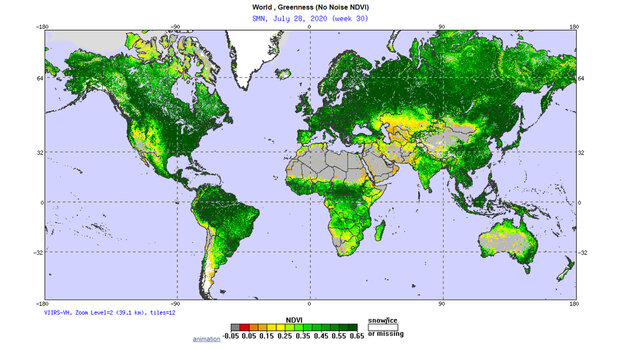Energy-detecting instruments on satellites give humans a way to monitor the status of vegetation around the world from space. The data can also indicate drought, soil saturation, fire risk, start/end of the growing season, and crop and pasture productivity.
Where do these data come from?
The Global Vegetation Health Products are created and maintained by the Environmental Monitoring Branch of the NOAA NESDIS Center for Satellite Applications and Research (STAR). Data and images are derived from the radiance (type and amount of energy) observed by the VIIRS sensor. VIIRS stands for Visible Infrared Imaging Radiometer Suite. The VIIRS sensor is located onboard the Soumi-NPP satellite. If you have further questions or comments about the Global Vegetation Health Products, you can reach out to Dr. Jerry Zhan or the STAR webmaster.
-
What can I do with these data?
- Compare various datasets to explore recent and current growing conditions across 245 countries or regions around the world.
- See how and where vegetation health has improved or declined over the last week
- Look for areas of increased drought risk
- Identify areas with an enhanced risk of malaria
How do I use the site?
- Click drop-down menus to select data type, area of interest, and time period.
- Check or uncheck the mask by desert and snow boxes to improve the display.
- Check the legend below each map, and read the information directly below the legend to interpret the image.
- Compare various datasets to explore recent and current growing conditions across 245 countries or regions around the world.
-
Data Format(s)PNG
Access Type Link & Description Visualization View or download images. -
Documentation Type Link & Description General -
Similar to using Google maps.
-
Data TypeSatelliteEssential Climate VariablesSoil moisture
 Click to see more detail
Click to see more detail
